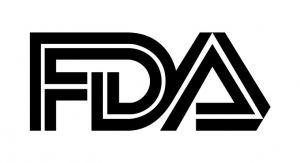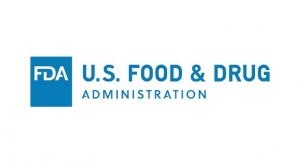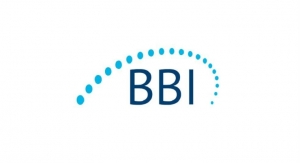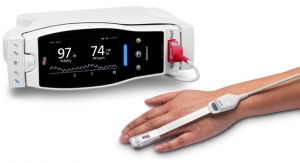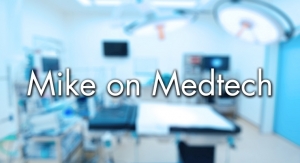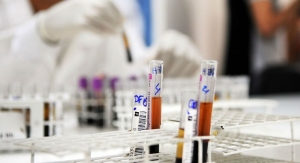Vicki Anastasi, VP and Global Head, Medical Device and Diagnostics Research, ICON01.31.19
Value-based healthcare (VBHC) models are poised to transform everything from how patient care is delivered to how treatments are priced. A 2016 analysis by UnitedHealthcare estimated that at the end of 2018, more than $65 billion would be tied to value-based contracts.1 Furthermore, as the movement gains momentum, the adoption of value-based care is projected to account for about 59 percent of healthcare payments by 2020.2
Unlike traditional models where care is considered to be the treatment a patient receives at the time he/she sees a healthcare provider, VBHC models consider care to be a long-term affair that stretches from the first doctor visit to months, or even years, after the treatment was first delivered. This encourages providers to consider the long-term outcomes and costs of a therapy.
VBHC follows the idea that payments for services are linked to the clinical and cost outcomes for treating a defined patient need, condition, or episode of care—as opposed to the volume of the provided services. Policymakers believe that holding healthcare providers accountable incentivizes improvements that will ultimately produce better individual patient and population health outcomes at a lower overall cost.
To achieve success in a VBHC market, device manufacturers will need to work with providers to control costs, while demonstrating value in terms of improved patient outcomes through new types of evidence. Manufacturers will need to share product performance data to providers that offer a complete solution to the procedures in which their devices are used. What’s more, they need to integrate themselves further in the healthcare delivery system.
This kind of integration is being encouraged by regulators, who are releasing guidance to advance public health benefits and transparent communication from companies and insurers across a product’s lifecycle. For instance, a recent FDA guidance aims to improve communications between device makers and payers, enabling better evaluation of new products before initiating value-based contracts.3
For device manufacturers, the challenges that come with the shift to VBHC are a marked departure from how the relationship between manufacturers, payers, and providers has been conducted previously.
Value Can Mean Many Things
Aligning the many definitions of value that each stakeholder holds is the biggest challenge in the transition to VBHC. Patients and physicians might put the highest value on individual clinical efficacy and convenience. On the other hand, payers and governments may not consider these as important as cost and population health impact.
An example that illustrates the misaligned definitions of value is the 90-day episode-of-care bundled payment for joint replacement surgery. A provider group that is getting a flat-rate bundled payment might be reluctant to spend more on a costlier joint replacement implant when there is a cheaper alternative available, even if the expensive implant can potentially reduce the patient’s healthcare costs over the long term. Therefore, the short-term financial incentive on the part of the provider is not aligned with the patient’s long-term best interests, in addition to the long-term treatment cost implications for the healthcare system.
The key to success is to ensure the many definitions of value align across stakeholders, especially with payers, who have the most sway in decisions. It is important to determine what benefits accrue to whom and over what time frame, and then to focus on those benefits when establishing a target market or during price negotiations.
A fundamental shift needs to occur when considering value. For instance, factoring value into clinical trial design should occur earlier in the product lifecycle and in balance with other aspects of a patient’s care. There also needs to be a process to ensure all parties are aligned regarding incentives.
When incentives are poorly aligned among stakeholders, they may take actions independent of others to maximize their own value, which may conflict with other aspects of development. A stakeholder value-mapping process is a helpful tool that can prevent these scenarios from occurring. Value maps capture the contribution of a medical technology across the full stakeholder spectrum, identifying what each stakeholder values and over what timeframe that value is returned. It allows an evaluation of how well incentives—provided by current payment models—align for stakeholders’ actions to be collectively homogeneous.
Manufacturers can use this map to assess the market potential of devices in development and guide evidence generation and actions that foster alignment of incentives for all stakeholders, so they all can realize the value they expect.
Putting a Price on Value
To ensure devices achieve success in the marketplace, manufacturers need to work with providers to control costs. Provider groups may attempt to circumvent the high price of a more expensive but better performing product by negotiating a lower price point from the manufacturer. Also, providers may turn to insurers to make a deal that pays the provider more for using a specific device because its higher upfront cost can be offset by lower treatment costs over future years.
In other cases, patients may be asked to pay the extra cost of a non-standard device or diagnostic, since payers reason patients would pay for a device that provides an improved outcome over the standard option.
Regardless of what cost-reducing method is chosen, payers will continue to hold providers accountable for delivering better outcomes at a lower overall price. This could cause manufacturers to consistently and aggressively lower the price of their products to remain a viable and attractive option.
Lowered pricing, however, places cost pressures on manufacturers, who could see lower margins on their devices as a result of operating in a VBHC system. While achieving profitability may become more challenging, manufacturers have the opportunity to increase sustainability and improve patient outcomes by changing how they approach device development. For example, carefully assessing, planning, and coordinating with a range of potential stakeholders will be required to generate higher margins.
As detailed previously, to counteract the potential decline in margins, device manufacturers need to incorporate steps to address value earlier in the product lifecycle. Traditionally, clinicians write study protocols that maximize clinical data collection, and an economist’s valuation of the device occurs late in the development process. This leaves the economist little time to gather and analyze data, which can significantly impair a new device or diagnostic’s survival in an already tough market.
Proving New Is More Than Better
In the past, to clear lower-risk devices under the FDA’s 510(k) or CE mark process, it was necessary to demonstrate the new device was equivalent to a previously approved product, but no clinical outcomes evidence was required for Class I and II devices. But under VBHC, buyers and regulators are requiring more evidence of clinical effectiveness and cost impact of new treatments to ensure they are getting their money’s worth.
As a result, device manufacturers will need to provide evidence that a product not only works, but also generates offsetting savings or patient benefits that make it worth the extra cost if it is a premium price over similar products.
In addition, from the provider’s perspective, claiming a device is equivalent to an older device means its worth is no more than the older device. So, for truly innovative devices, manufacturers must consider the worth of investing in a PMA program that gathers detailed clinical evidence and cost impact information, and at the same time, give the innovative device an edge once it is available on the market. Therefore, clinical and economic data are essential to developing a value-based case for higher payment.
mHealth Helps to Gather Evidence
Showing the long-term benefits of novel devices requires new types of metrics and data gathering methods. For example, data from mobile health technologies (mHealth)—which includes mobile sensors for detecting clinical signs and patient activity; mobile apps for running diagnostic quizzes and reporting symptoms; and telemedicine applications that run on smartphones and tablets—can be transmitted wirelessly, enabling continuous monitoring of patient progress or therapy adherence.
Using mHealth technologies can generate the evidence needed for manufacturers to demonstrate value in several ways. The litany of mobile sensors can generate continuous streams of data on vital signs such as blood pressure, blood sugar, and heart rate. mHealth can also identify changes in patient outcomes of which they themselves may not be aware, such as increased activity due to relief of chronic pain.
Perhaps the most important information that mHealth technologies bring to light are data for real-time patient activity, which show how a therapy impacts patient outcomes, especially those that are difficult to document through periodic clinical visits, such as the ability to walk to the grocery store or care for themselves or others.
Moreover, diagnostic and telemedicine apps can keep patients in communication with clinics, creating scenarios where healthcare providers can discharge patients earlier after surgery, since they will be monitored in a home setting and still be in close contact with the provider in the event there are complications.
Conclusion
Moving forward, the implementation of VBHC models means manufacturers will need to demonstrate clinical efficacy and cost impact of new devices—especially earlier in the development process—to ensure products benefit patients, while outweighing any extra costs. mHealth technologies have the potential to document the value of treatments more effectively, helping manufacturers to increase treatment value, while presenting a persuasive case to payers. Despite the challenges, the rewards of value-based care can be high for manufacturers, as they can help patients to have more timely access to innovative medical technologies.
Partnering with a CRO that has a proven track record in clinical evidence generation, economic modeling, and commercialization expertise can help throughout the stakeholder value-mapping process and ensure a new device can have a good market impact.
References
1 http://bit.ly/mpo190140 [PDF]
2 http://bit.ly/mpo190141
3 http://bit.ly/mpo190142 [PDF]
Vicki Anastasi is vice president and global head, Medical Device and Diagnostics Research, at ICON plc. She provides leadership to create and foster priority relationships in the medical device and diagnostic marketplace, developing customized programs to meet medical device client needs. She has over 25 years of experience in the medical device industry, with over 15 years specifically focused on global medical device strategic consulting.
Unlike traditional models where care is considered to be the treatment a patient receives at the time he/she sees a healthcare provider, VBHC models consider care to be a long-term affair that stretches from the first doctor visit to months, or even years, after the treatment was first delivered. This encourages providers to consider the long-term outcomes and costs of a therapy.
VBHC follows the idea that payments for services are linked to the clinical and cost outcomes for treating a defined patient need, condition, or episode of care—as opposed to the volume of the provided services. Policymakers believe that holding healthcare providers accountable incentivizes improvements that will ultimately produce better individual patient and population health outcomes at a lower overall cost.
To achieve success in a VBHC market, device manufacturers will need to work with providers to control costs, while demonstrating value in terms of improved patient outcomes through new types of evidence. Manufacturers will need to share product performance data to providers that offer a complete solution to the procedures in which their devices are used. What’s more, they need to integrate themselves further in the healthcare delivery system.
This kind of integration is being encouraged by regulators, who are releasing guidance to advance public health benefits and transparent communication from companies and insurers across a product’s lifecycle. For instance, a recent FDA guidance aims to improve communications between device makers and payers, enabling better evaluation of new products before initiating value-based contracts.3
For device manufacturers, the challenges that come with the shift to VBHC are a marked departure from how the relationship between manufacturers, payers, and providers has been conducted previously.
Value Can Mean Many Things
Aligning the many definitions of value that each stakeholder holds is the biggest challenge in the transition to VBHC. Patients and physicians might put the highest value on individual clinical efficacy and convenience. On the other hand, payers and governments may not consider these as important as cost and population health impact.
An example that illustrates the misaligned definitions of value is the 90-day episode-of-care bundled payment for joint replacement surgery. A provider group that is getting a flat-rate bundled payment might be reluctant to spend more on a costlier joint replacement implant when there is a cheaper alternative available, even if the expensive implant can potentially reduce the patient’s healthcare costs over the long term. Therefore, the short-term financial incentive on the part of the provider is not aligned with the patient’s long-term best interests, in addition to the long-term treatment cost implications for the healthcare system.
The key to success is to ensure the many definitions of value align across stakeholders, especially with payers, who have the most sway in decisions. It is important to determine what benefits accrue to whom and over what time frame, and then to focus on those benefits when establishing a target market or during price negotiations.
A fundamental shift needs to occur when considering value. For instance, factoring value into clinical trial design should occur earlier in the product lifecycle and in balance with other aspects of a patient’s care. There also needs to be a process to ensure all parties are aligned regarding incentives.
When incentives are poorly aligned among stakeholders, they may take actions independent of others to maximize their own value, which may conflict with other aspects of development. A stakeholder value-mapping process is a helpful tool that can prevent these scenarios from occurring. Value maps capture the contribution of a medical technology across the full stakeholder spectrum, identifying what each stakeholder values and over what timeframe that value is returned. It allows an evaluation of how well incentives—provided by current payment models—align for stakeholders’ actions to be collectively homogeneous.
Manufacturers can use this map to assess the market potential of devices in development and guide evidence generation and actions that foster alignment of incentives for all stakeholders, so they all can realize the value they expect.
Putting a Price on Value
To ensure devices achieve success in the marketplace, manufacturers need to work with providers to control costs. Provider groups may attempt to circumvent the high price of a more expensive but better performing product by negotiating a lower price point from the manufacturer. Also, providers may turn to insurers to make a deal that pays the provider more for using a specific device because its higher upfront cost can be offset by lower treatment costs over future years.
In other cases, patients may be asked to pay the extra cost of a non-standard device or diagnostic, since payers reason patients would pay for a device that provides an improved outcome over the standard option.
Regardless of what cost-reducing method is chosen, payers will continue to hold providers accountable for delivering better outcomes at a lower overall price. This could cause manufacturers to consistently and aggressively lower the price of their products to remain a viable and attractive option.
Lowered pricing, however, places cost pressures on manufacturers, who could see lower margins on their devices as a result of operating in a VBHC system. While achieving profitability may become more challenging, manufacturers have the opportunity to increase sustainability and improve patient outcomes by changing how they approach device development. For example, carefully assessing, planning, and coordinating with a range of potential stakeholders will be required to generate higher margins.
As detailed previously, to counteract the potential decline in margins, device manufacturers need to incorporate steps to address value earlier in the product lifecycle. Traditionally, clinicians write study protocols that maximize clinical data collection, and an economist’s valuation of the device occurs late in the development process. This leaves the economist little time to gather and analyze data, which can significantly impair a new device or diagnostic’s survival in an already tough market.
Proving New Is More Than Better
In the past, to clear lower-risk devices under the FDA’s 510(k) or CE mark process, it was necessary to demonstrate the new device was equivalent to a previously approved product, but no clinical outcomes evidence was required for Class I and II devices. But under VBHC, buyers and regulators are requiring more evidence of clinical effectiveness and cost impact of new treatments to ensure they are getting their money’s worth.
As a result, device manufacturers will need to provide evidence that a product not only works, but also generates offsetting savings or patient benefits that make it worth the extra cost if it is a premium price over similar products.
In addition, from the provider’s perspective, claiming a device is equivalent to an older device means its worth is no more than the older device. So, for truly innovative devices, manufacturers must consider the worth of investing in a PMA program that gathers detailed clinical evidence and cost impact information, and at the same time, give the innovative device an edge once it is available on the market. Therefore, clinical and economic data are essential to developing a value-based case for higher payment.
mHealth Helps to Gather Evidence
Showing the long-term benefits of novel devices requires new types of metrics and data gathering methods. For example, data from mobile health technologies (mHealth)—which includes mobile sensors for detecting clinical signs and patient activity; mobile apps for running diagnostic quizzes and reporting symptoms; and telemedicine applications that run on smartphones and tablets—can be transmitted wirelessly, enabling continuous monitoring of patient progress or therapy adherence.
Using mHealth technologies can generate the evidence needed for manufacturers to demonstrate value in several ways. The litany of mobile sensors can generate continuous streams of data on vital signs such as blood pressure, blood sugar, and heart rate. mHealth can also identify changes in patient outcomes of which they themselves may not be aware, such as increased activity due to relief of chronic pain.
Perhaps the most important information that mHealth technologies bring to light are data for real-time patient activity, which show how a therapy impacts patient outcomes, especially those that are difficult to document through periodic clinical visits, such as the ability to walk to the grocery store or care for themselves or others.
Moreover, diagnostic and telemedicine apps can keep patients in communication with clinics, creating scenarios where healthcare providers can discharge patients earlier after surgery, since they will be monitored in a home setting and still be in close contact with the provider in the event there are complications.
Conclusion
Moving forward, the implementation of VBHC models means manufacturers will need to demonstrate clinical efficacy and cost impact of new devices—especially earlier in the development process—to ensure products benefit patients, while outweighing any extra costs. mHealth technologies have the potential to document the value of treatments more effectively, helping manufacturers to increase treatment value, while presenting a persuasive case to payers. Despite the challenges, the rewards of value-based care can be high for manufacturers, as they can help patients to have more timely access to innovative medical technologies.
Partnering with a CRO that has a proven track record in clinical evidence generation, economic modeling, and commercialization expertise can help throughout the stakeholder value-mapping process and ensure a new device can have a good market impact.
References
1 http://bit.ly/mpo190140 [PDF]
2 http://bit.ly/mpo190141
3 http://bit.ly/mpo190142 [PDF]
Vicki Anastasi is vice president and global head, Medical Device and Diagnostics Research, at ICON plc. She provides leadership to create and foster priority relationships in the medical device and diagnostic marketplace, developing customized programs to meet medical device client needs. She has over 25 years of experience in the medical device industry, with over 15 years specifically focused on global medical device strategic consulting.



